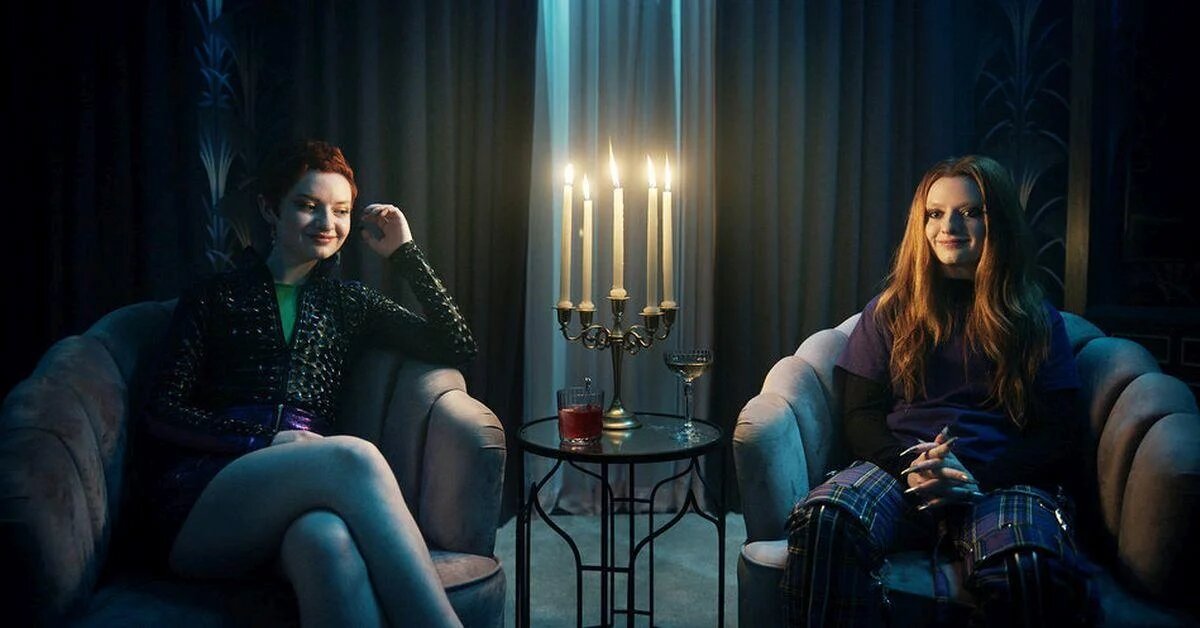Glen/Glenda’s Return in ‘Chucky’ Breaks the Mold on Gender Presentation in Horror … Again
“Be a good girl ... Or boy ... Whatever. Don't make the same mistakes your mum and dad made ... Especially your dad.” -Tiffany Valentine with A+ parenting advice

Horror movies can be a double-edged sword when it comes to taboo topics. They can reinforce societal fears about the “unknown” or open up conversations about the things we fear. Sometimes they can manage to do both at the same time. One example of this was Seed of Chucky, which featured a genderfluid protagonist at a time when most people didn’t even know what gender fluidity was.
Origins
Glen, the living doll child of slasher killers-turned-murderous dolls Chucky (Charles Lee Ray) and Tiffany Valentine, grapples with feeling like both a boy and a girl, a situation not helped by parental pressure to choose one or the other. This pressure eventually manifests as an outright split personality: Glen, the “male” half, is a sweet boy who just wants his parents to stop killing people. Glenda, the “female” half, is a murderer who enjoys following in her parents’ footsteps. However, the story was undercut by the ending, which “solved” the gender fluidity by splitting the male and female halves of Glen/Glenda into two different bodies.
Ultimately, the underperformance of this movie and fan hatred of the film meant that Glen/Glenda weren’t referenced in the two direct-to-video movies, Curse of Chucky and Cult of Chucky, and were only briefly alluded to in the first season of the SyFy show. Despite this, Glen and Glenda have many fans in the LGBTQ+ community, and many longtime Chucky fans began to ask what happened to them.
The Return
Thankfully, Episode 4 of Chucky season 2 features the return of Glen/Glenda, Chucky and Tiffany’s twin children, and updates their gender identity for the 2020s. Portrayed by non-binary actor Lachlan Watson, Glen and Glenda are now both non-binary/genderfluid and polyamorous, and are still dealing with the family drama that comes from having parents who are killer dolls (former or otherwise).
The Chucky show and franchise have already featured a lot of queer representation: The new teenage cast has a queer couple (Jake and Devon), Tiffany Valentine is a confirmed bisexual queen, and actress Fiona Dourif has played multiple male and female characters (including standing in for her own father, Brad Dourif, as younger Charles Lee Ray).
All of this is thanks to Don Mancini, series creator/writer/director, who has been exploring gender and sexuality through his characters since Seed of Chucky. While not every portrayal has aged perfectly, I think he should be applauded for 1) pushing boundaries the moment he got creative control and 2) shown many LGBTQ+ characters as flawed and complicated. Tiffany Valentine is a wonderful character, but her relationships, both queer and straight, tend to be obsessive and abusive, whether it’s at her hand or that of her partner. But Glen and Glenda are special for being a demonstration of both where we were and how far we’ve come.
Updating Representation
Glen and Glenda both pay tribute to their origins while updating the representation. Some fans thought Glen’s/Glenda’s transfer into human bodies would end their gender dysphoria, but like many other trans people, their journey of self-discovery is not a straight path. Just because they were given human bodies does not mean they aren’t still genderfluid, and I admire Don Mancini’s acknowledgment of that. They are also surrounded by supportive friends and family, focusing on queer joy of having your identity validated, a nice change of pace from media that often focuses on either the straight experience of adjusting to others’ transitions or on the angst of not being accepted as queer.
Their newest appearance has also updated the portrayal of split personalities. Glen and Glenda are unique because they aren’t just twins, they’re multiple personalities of the same person that has been split up into two people. Now we’re seeing the backlash of this enforced biological binary, both mental and physical; Glenda is haunted by nightmares (forgotten memories) of killing someone, and the twins say that they have never “felt whole” but don’t know why, because they don’t remember their origins.
The treatment of Glenda is especially interesting since she was initially almost an update to the gender dysphoria presented by some slasher killers. (I do not have the credentials to talk about this and would suggest taking a look at the Dead Meat Podcast or Lindsay Ellis’ video essay on trans “representation” in horror media.) Now, they’re a character in their own right and one who despite their violent urges, also has a sense of justice and an understanding that parents can sometimes be awful people even if they’re decent parents. Even more interesting, Glenda’s now made their escape from their mother’s home without their twin, in the company of Nica/Chucky and Kyle (Andy’s foster sister from Child’s Play 2), meaning there will be a whole host of new perspectives on her family for her to absorb.
What’s fascinating is that there are so many paths to go down with these characters, especially when you’ve got body-swapping magic at your disposal. The twins could join together in the same body again, or they could decide to go completely separate ways. Until then, I can’t wait to see how Glen and Glenda’s characters develop with all the new characters and perspectives they’re being exposed to.
What do you think of Glen/Glenda’s return? Comment below!
(featured image: SyFy)
Have a tip we should know? [email protected]
